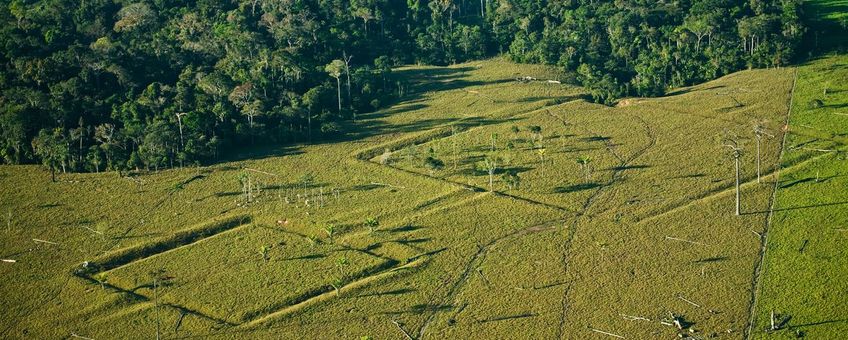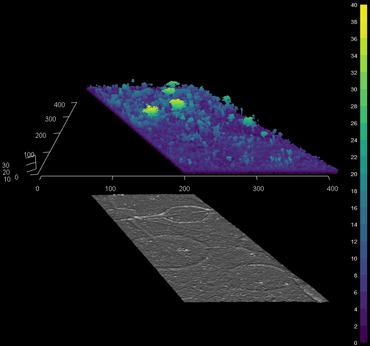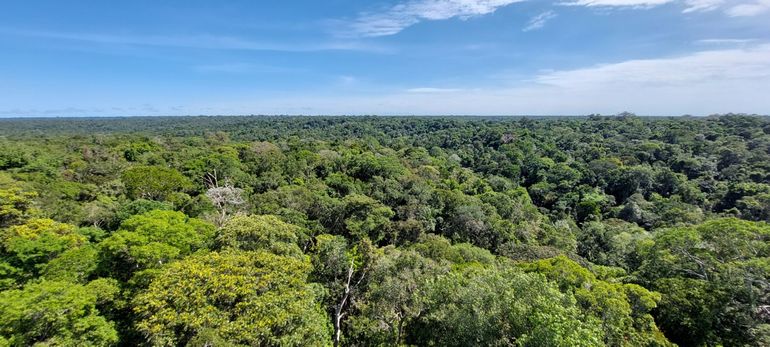
More than 10,000 hidden structures in the Amazon
Naturalis Biodiversity CenterA total of 230 researchers and 156 organizations worked together to get a picture of the distribution of geoglyphs. Naturalis researcher Prof. Dr. Hans ter Steege also contributed, and he concludes that there is a link between the location of geoglyphs and of certain domesticated tree species. Hans: "The age of the forest correlates with the finding of geoglyphs."
Scanning through the foliage

Investigating the Amazon forest floor is not easy; after all, the foliage obstructs the view of the ground, and even on the ground, the remains are often completely overgrown. This is why LiDAR equipment is used. LiDAR (Light Detection and Ranging) is a technology that works with laser light and can make extremely detailed 3D scans of the ground surface, among other things. The equipment was attached to a plane that the researchers used to fly over parts of the Amazon. The technology filters out vegetation, revealing hills and gullies that indicate the remnants of so-called pre-Columbian societies: before the arrival of Europeans. Some 900 flights have been made in recent years. In a recent Brazilian study, in which 230 researchers collaborated, another 36 flights were done, finding 24 new geoglyphs.
History of the Amazon
Knowledge about the Amazon forest has been shaken considerably by the finds. Where it was first thought that the forest remained untouched for centuries, the geoglyphs point to human habitation of the forest. Some anthropologists even suggest that most of the Amazon was once inhabited.
Planted clues
Hans ter Steege is a scientist at Naturalis Biodiversity Center and Utrecht University. He nuances the view that the entire Amazon was once inhabited. According to him, in 80 percent of the forest it is very unlikely that humans had a major influence on it. He makes this statement based on the distribution of geoglyphs found so far and the distribution of 85 domesticated trees. Ter Steege: "There is an overlap between the places where the geoglyphs have been found and where these domesticated species grow." These are trees such as the Brazil nut, forest grape and cocoa trees: trees that are useful to human societies. In some areas, the occurrence of these trees is so great that it is almost inevitable that these trees were planted by humans. A very large part of the Amazon, however, seems to be quite undisturbed.

Man and the forest
Research on the geoglyphs is not only interesting in the scientific field, but also has social implications. Indigenous inhabitants of the Amazon forest can demonstrate to the Brazilian government that they have inhabited the forest for centuries and therefore should retain their land rights. In addition, geoglyph research is important for the Amazon Tree Diversity Network, of which Hans ter Steege is coordinator. This research group maps the vegetation of the Amazon forest. Hans: "Because of the finding of the geoglyphs, we now know that certain parts of the forest are only a few centuries old, instead of millions of years."

More information
- An accompanying story is published at Science, along with the research paper.
- Find out more about the research by Hans ter Steege at Naturalis.
Text: Sietske Hoekstra, Naturalis Biodiversity Center
